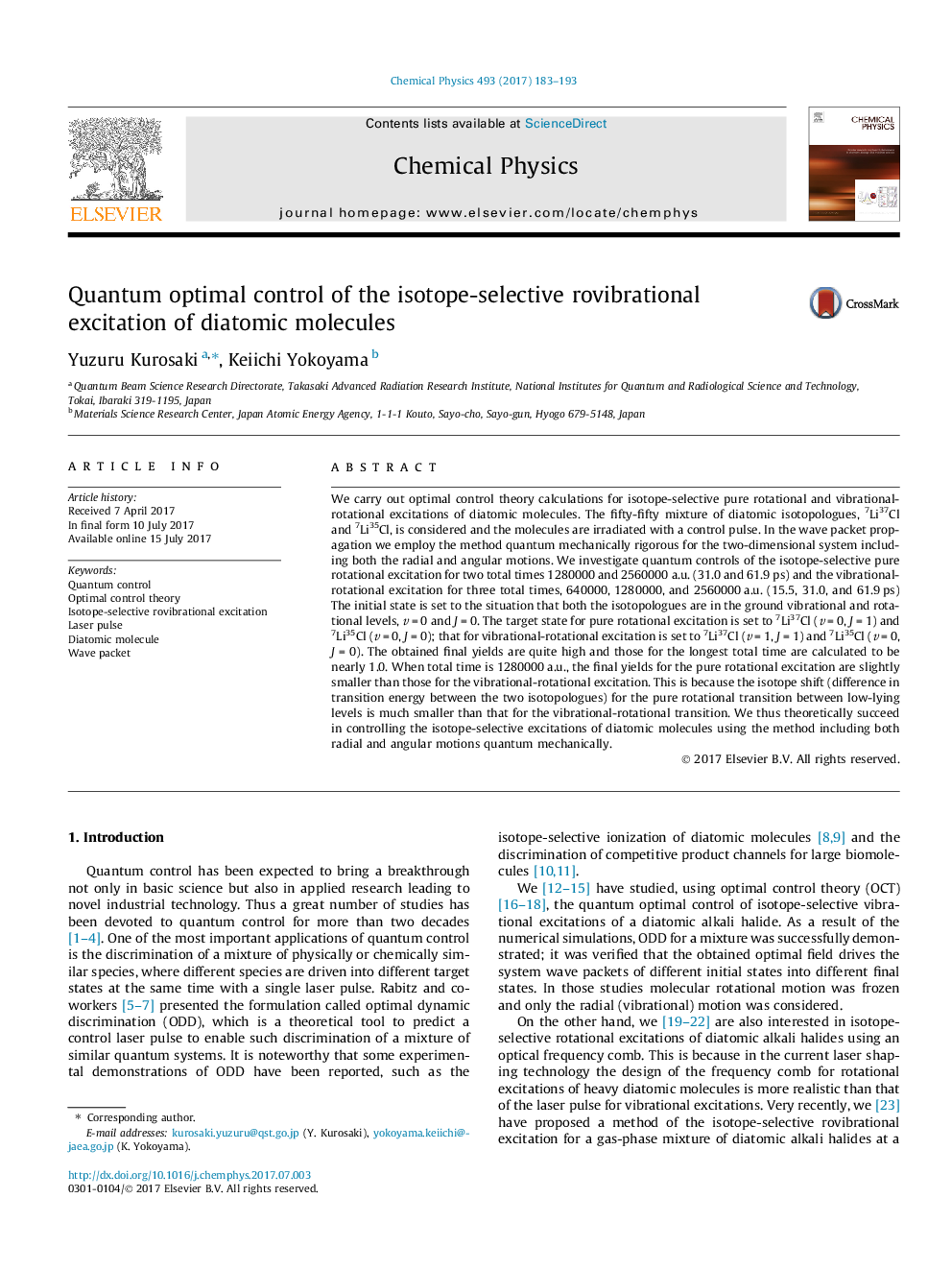| Article ID | Journal | Published Year | Pages | File Type |
|---|---|---|---|---|
| 5372633 | Chemical Physics | 2017 | 11 Pages |
We carry out optimal control theory calculations for isotope-selective pure rotational and vibrational-rotational excitations of diatomic molecules. The fifty-fifty mixture of diatomic isotopologues, 7Li37Cl and 7Li35Cl, is considered and the molecules are irradiated with a control pulse. In the wave packet propagation we employ the method quantum mechanically rigorous for the two-dimensional system including both the radial and angular motions. We investigate quantum controls of the isotope-selective pure rotational excitation for two total times 1280000 and 2560000 a.u. (31.0 and 61.9 ps) and the vibrational-rotational excitation for three total times, 640000, 1280000, and 2560000 a.u. (15.5, 31.0, and 61.9 ps) The initial state is set to the situation that both the isotopologues are in the ground vibrational and rotational levels, v = 0 and J = 0. The target state for pure rotational excitation is set to 7Li37Cl (v = 0, J = 1) and 7Li35Cl (v = 0, J = 0); that for vibrational-rotational excitation is set to 7Li37Cl (v = 1, J = 1) and 7Li35Cl (v = 0, J = 0). The obtained final yields are quite high and those for the longest total time are calculated to be nearly 1.0. When total time is 1280000 a.u., the final yields for the pure rotational excitation are slightly smaller than those for the vibrational-rotational excitation. This is because the isotope shift (difference in transition energy between the two isotopologues) for the pure rotational transition between low-lying levels is much smaller than that for the vibrational-rotational transition. We thus theoretically succeed in controlling the isotope-selective excitations of diatomic molecules using the method including both radial and angular motions quantum mechanically.
